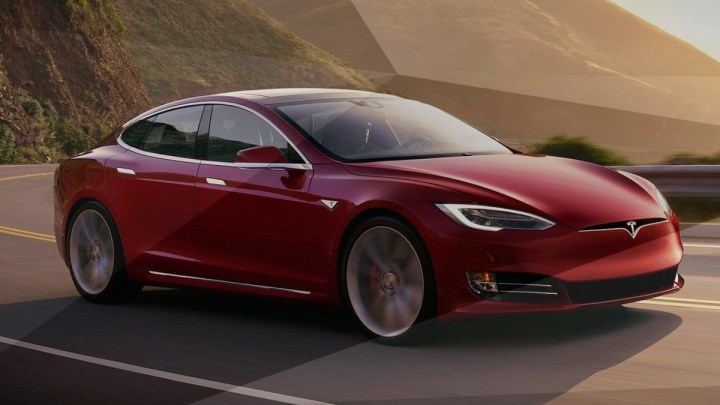
The big news is increased Autopilot capability for cars equipped with Tesla’s “Hardware 2” sensor suite, which includes every vehicle built since October 2016. Hardware 2 features more sensors than the previous Hardware 1 suite, but less-capable software, meaning newer cars don’t have some of the Autopilot features older ones do.
One of the major features the 8.1 software adds is automated lane changing, something previously missing from Hardware 2 cars but available on older cars. It allows the driver to initiate a lame change by simply flicking the turn signal stalk; the car’s adaptive cruise control and Autosteer systems take care of everything else.
Speaking of Autosteer, the 8.1 update raises its speed from 55 mph to 80 mph. However, drivers won’t be able to take advantage of that right away. The update requires a camera calibration, which is performed automatically, but requires several days of driving on highways with clear lane markings. Autosteer will continue to work up to 55 mph during this process.
The 8.1 update also adds Summon to Hardware 2 cars. Another feature previously available only on cars with the older hardware set, it allows the driver to remotely park and retrieve a car using the key fob or a smartphone app.
A host of other tweaks are included as well. The lane-departure warning system now vibrates the steering wheel when a driver crosses over lane markers without signaling. Front-seat headrests can now be adjusted using the lumbar-support adjustment button. Business’ Google ratings and hours of operation now show up on the navigation system. And the Model X gets a feature to disable automatic seat adjustment for the second row, and owners can now lower the default opening height for its “Falcon” doors.
Editors' Recommendations
- Tesla to fix window software on 1M of its U.S. cars
- Cadillac Super Cruise vs. Tesla Autopilot
- Andrew Yang broke Tesla’s one big Autopilot rule in campaign commercial


